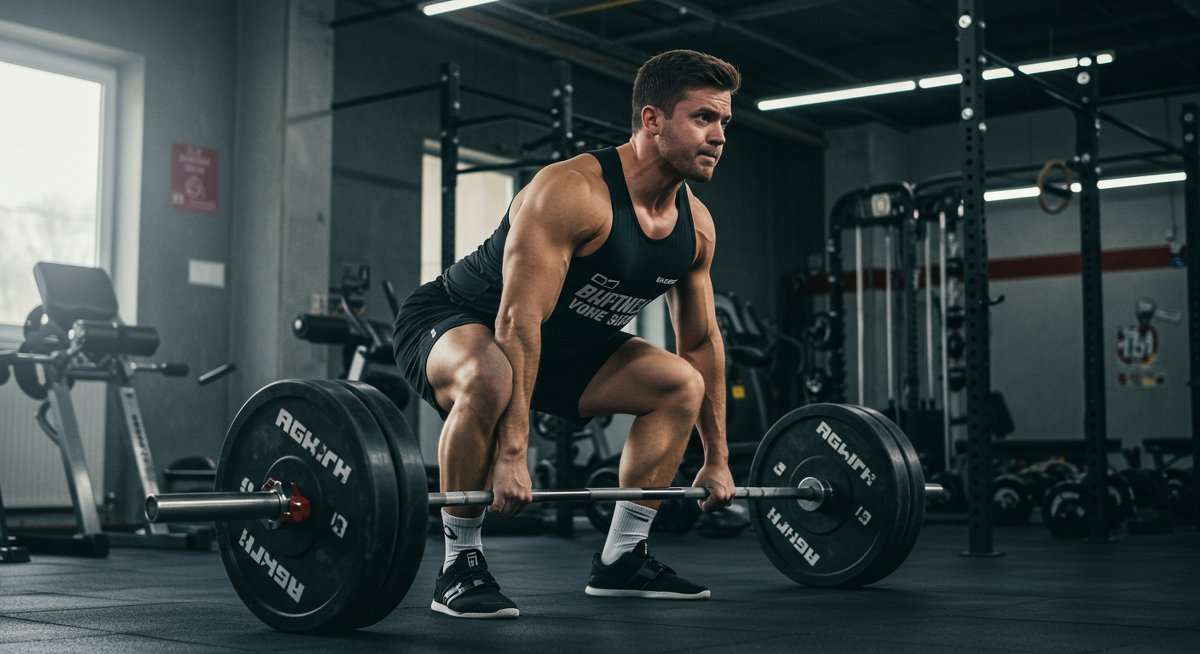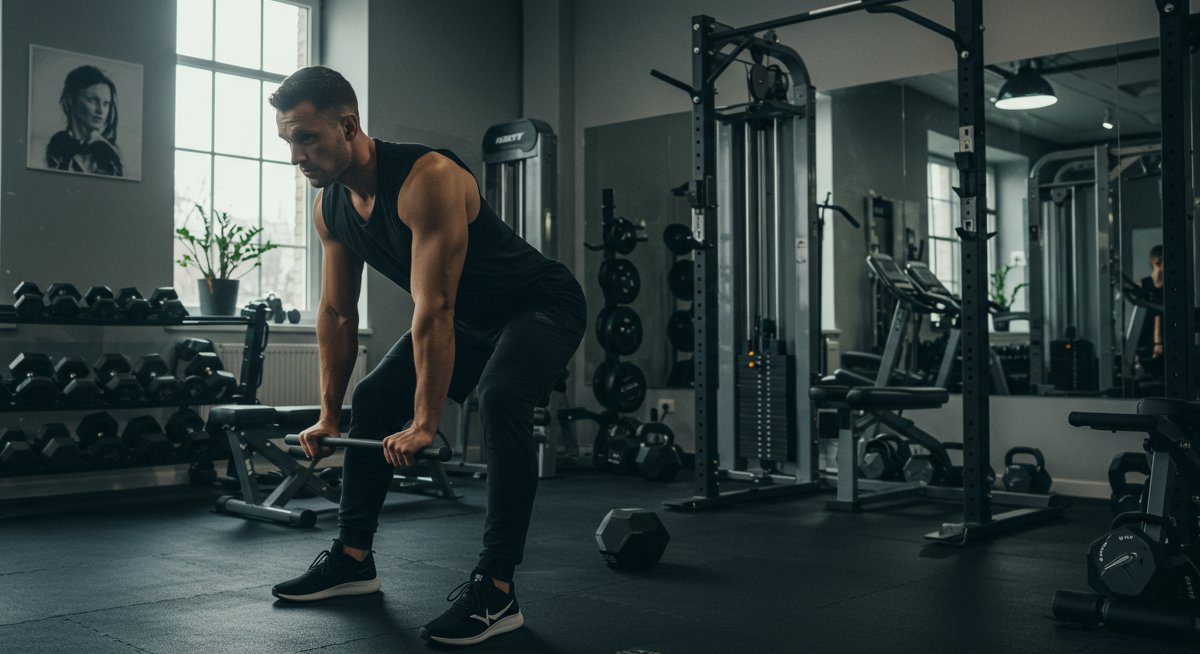That Home Gym Dream...
So, I was scrolling through r/homegym the other day (as one does), and I saw this post that really caught my eye. A guy was showing off his new home gym after, get this, 18 years of commercial gym memberships. Eighteen years! That's a long time to be swiping that membership card.
He talked about all the usual frustrations: membership fees eating away at his wallet, the commute time sucking up his precious hours, waiting around for equipment when all you want to do is lift, and the ever-increasing gas prices just to get to the gym. He finally pulled the trigger and built his own setup, and he was clearly stoked about it.

It got me thinking. We’ve all been there, right? Staring at the squat rack, willing the dude with the phone permanently attached to his hand to please finish his set. Or trying to squeeze in a workout during peak hours, feeling like you're navigating a crowded subway car. The dream of a home gym – a sanctuary of iron and sweat, free from judgment and crowded benches – is a pretty common one. But is it actually worth it? What does it really take to build your own gym, and is it a better option than sticking with the commercial route? Let’s break it down, because this isn’t as straightforward as it seems on the surface.
Breaking Down the Investment
Let's get real about the costs. The Redditor in question listed out his equipment, and it's a solid setup. He's got a Rogue Rhino rack, which is a serious piece of equipment. A stainless steel Ohio bar, Ironmaster bench and dumbbells, horse stall mats for flooring, and a decent amount of weight plates. And he’s even got more stuff on the way! Looking at that list, you’re easily talking several thousands of dollars.
But here's the thing: commercial gyms aren't exactly cheap either. Let's say you're paying $50 a month for a basic membership. Over 18 years, that's $10,800. And that's just the membership fee. That doesn't include gas, wear and tear on your car, the occasional protein shake you buy there, or the impulse to buy new workout clothes because, hey, you're at the gym, might as well look the part.
So, the initial investment for a home gym is definitely higher. You're dropping a big chunk of change upfront. But over the long haul, it might actually be the more economical option. Plus, you own the equipment. It's an asset. You can sell it later if you decide it's not for you anymore.
What Does This Mean for Your Fitness?
Okay, so let's say the costs are comparable over the long term. What about the actual fitness aspect? Does working out at home actually lead to better results than going to a commercial gym? Well, that depends entirely on you.
A home gym eliminates a lot of the common excuses for skipping workouts. No commute. No waiting for equipment. No feeling self-conscious about your form in front of a bunch of strangers. You can blast your music as loud as you want, grunt like a caveman without getting weird looks, and wear whatever the heck you want.
But it also requires a lot of self-discipline. There's no instructor telling you what to do. No group fitness classes to motivate you. No social pressure to show up and work hard. It's all on you to create your own workout routine, stay consistent, and push yourself when you'd rather be watching Netflix. That’s a big factor for many people and something you really have to consider. Some people thrive in that environment, some people really struggle.
The Reality Nobody Likes to Talk About: Motivation Dips
Let's be honest: motivation is a fickle beast. It comes and goes like the tide. One day you're pumped to crush a new personal best, the next day you can barely drag yourself off the couch. And that's where the reality of a home gym can really hit you.
In a commercial gym, you're surrounded by other people who are working towards their own goals. There's a certain energy in the air that can be contagious. You see someone lifting heavy, and it inspires you to push yourself a little harder. You see someone struggling, and it reminds you that you're not alone.
At home, it's just you and your weights. There's no external accountability. No one to high-five you after a tough set. No one to spot you when you're pushing your limits. It's easy to let your workouts slide when no one's watching. This is why a lot of people find it really difficult to stay consistent when they’re training at home. It requires a different level of commitment, and you have to be real with yourself about whether or not you can make that commitment.
Making the Home Gym Work for Your Life
Alright, so you're intrigued by the idea of a home gym, but you're also a little worried about the motivation factor. What can you do to make it work for your life? The key is to create an environment that's conducive to working out.
First, designate a specific area for your gym. It doesn't have to be a huge space, but it should be separate from your living area. This will help you mentally associate that space with exercise. If you try to workout in your living room where you normally chill out, it's going to be harder to get motivated.
Second, make it a space you want to be in. Put up some motivational posters. Get a good sound system. Make sure the lighting is good. If you’re staring at bare concrete walls and a single flickering bulb, it’s not going to be particularly inspiring.
Third, schedule your workouts like you would any other important appointment. Put them in your calendar and treat them as non-negotiable. This will help you stay consistent, even when you're not feeling particularly motivated.
Actually Putting This Into Practice, Step-by-Step
Okay, so how do you actually build a home gym that you'll actually use? Here's a step-by-step guide:
Assess Your Space: How much room do you have? What's the flooring like? Is there enough ventilation? These are all important considerations.
Set a Budget: How much are you willing to spend? Be realistic. You don't need to buy everything at once. You can start with the basics and add more equipment over time.
Prioritize Equipment: What are your fitness goals? What kind of workouts do you enjoy doing? Choose equipment that aligns with your goals and preferences.
Shop Around: Don't just buy the first thing you see. Compare prices and read reviews. Look for used equipment. You can often find great deals on Craigslist or Facebook Marketplace.
Start Small: You don't need to buy a $5,000 power rack right away. Start with a few basic pieces of equipment, like dumbbells, a bench, and resistance bands. You can always add more later.

My Take on All This: It's a Personal Choice
So, after all that, what's my take on the home gym vs. commercial gym debate? Honestly, there's no right or wrong answer. It's a personal choice that depends on your individual circumstances, goals, and personality.
If you're someone who thrives on social interaction and needs the structure of a class or the guidance of a trainer, a commercial gym might be the better option for you. If you're someone who's self-motivated, disciplined, and prefers to work out on your own schedule, a home gym might be a great fit.
And even if you do build a home gym, that doesn't mean you have to completely ditch the commercial gym. You can always keep your membership and use it for things like swimming, group fitness classes, or access to specialized equipment that you don't have at home.
Ultimately, the best gym is the one that you'll actually use. Whether that's a state-of-the-art fitness center or a humble setup in your garage, the most important thing is that you're moving your body and taking care of your health. And that’s something we can all agree on.